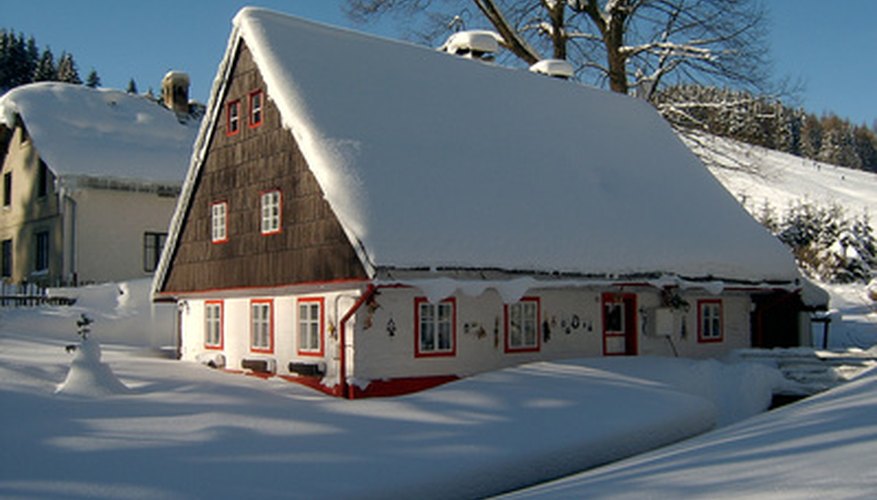Noggins are not normally used in the United States for house framing but are common in the United Kingdom. Noggins are horizontal cross braces placed between studs to help stabilise the wall. Studs are the upright boards used to build a wall. Because they are popular in the U.K., building codes regulate their specific locations.
Wall Placement
Normally, noggins are equally spaced between the floor and the ceiling. For example, if a wall is 8 feet tall, the noggins would be placed at 4 feet above the floor. The noggins can be staggered slightly to allow for nailing them in between the studs. If plasterboard is laid on the wall horizontally, normal building practice is to place the noggins at the seam line, so the plasterboard can be nailed to the noggins.
- Normally, noggins are equally spaced between the floor and the ceiling.
- If plasterboard is laid on the wall horizontally, normal building practice is to place the noggins at the seam line, so the plasterboard can be nailed to the noggins.
Second-Floor Partition Walls
According to the Barrow-in-Furness Borough Council, if a second-floor partition (non-load-bearing) wall is built, noggins must be placed between the joists running beneath the wall. Joists are the horizontal beams that support the ceiling on the first floor and the floor on the second story. The noggins must be nailed to each joist on either side of the wall and directly underneath the studs of the partition wall.
Roof Trussing
According to the Salford City Council, steel strapping must be affixed to the noggins separating the roof trusses or rafters. The straps---and the noggins as well---cannot be more than 2 meters (39 inches) apart. Furthermore, the noggins and metal straps must span the entire length of the roof line.
